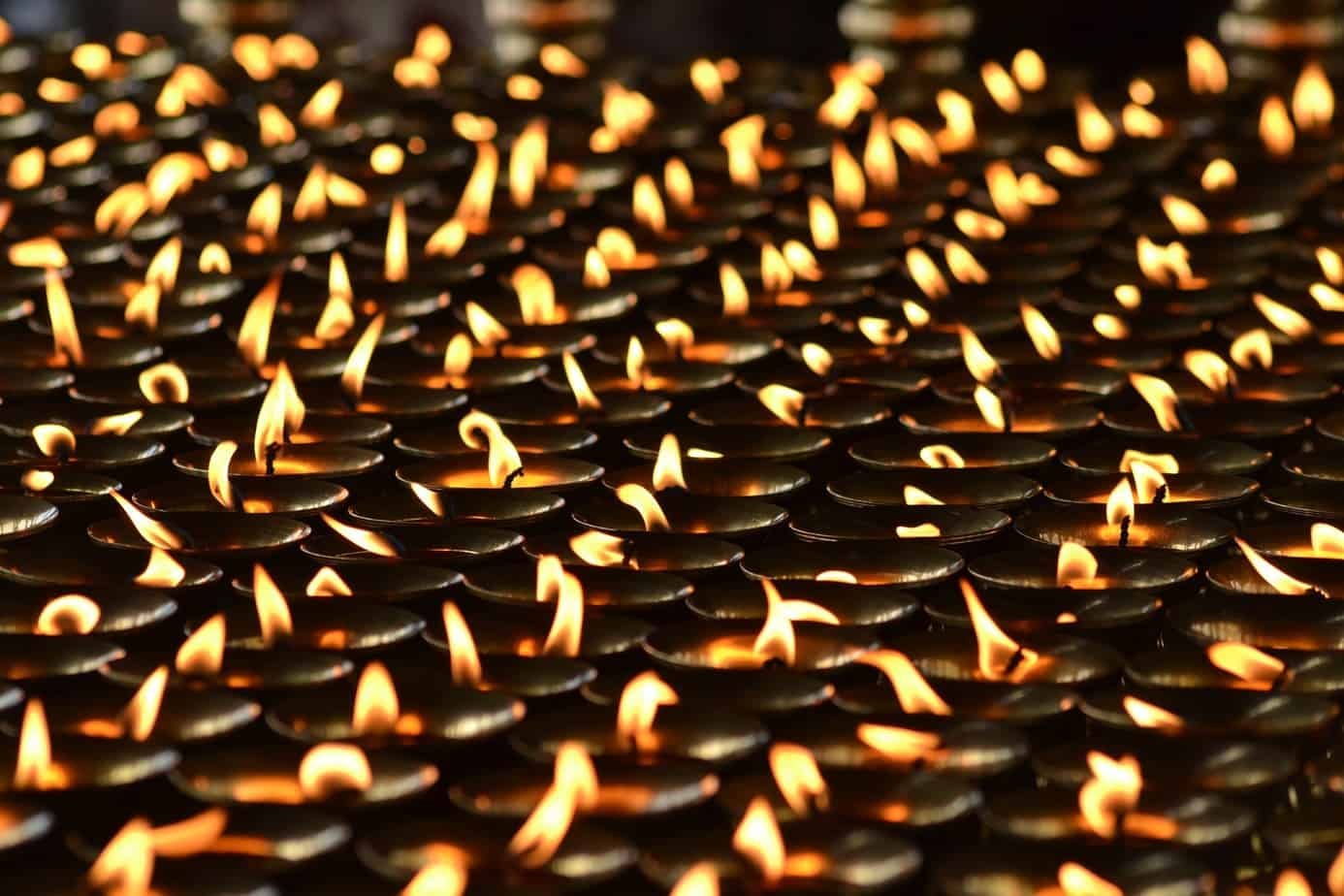Diwali – Journey from Darkness and Untruth to Light and Truth

Fulfillment of light as embodiment of Truth is the greatest aspiration held in Spiritual journey, which the Hindu way of life celebrates. The light comes from clarity of one’s perception of reality, and darkness stems from conditioning of mind and senses clouding the experience of life.
Darkness is not evil, and Light is not just Good. Darkness is the prevailing of ignorance of Untruth, and Light is the experience of Truth.
Mind conditioning, which is facilitated by the gathering of impressions over the years gives a useful though limited perception of reality. If mind is preoccupied, it may not even see something that was right in front of the eyes. Or, see something that never was there, if it imagined it strongly enough. Experiencing life, indeed every moment, sans conditioning, is the experience of Light and Truth.
Diwali, the most important and the greatest festival in India and for the Hindus, is the celebration of Light and Truth.
The story goes that there was a king named Ravana. He had attained the highest of wisdom and knew all that there was to life, but his mind and desires kept him attached to his physical lust. He lusted for many women, killed many Sages to prove his dominance. Or, in normal parlance, led a Demonic life.
Rama, was the incarnation of Divine itself. He was wise, reflective and compassionate. When his wife Sita, became the object of lust for Ravana and was abducted, Rama went in search of her. He finally met Ravana in a mighty battle after requests to return his wife safely were ignored. In that battle, Rama killed Ravana and finally returned home to his kingdom with his wife, Sita. Diwali marks the celebration of the return of victorious Rama to his people.
Interestingly, both – Ravana and Rama – were devotees of the same Supreme Being and Adi Yogi (First Yogi) – Shiva. One was the epitome of Darkness (as Mind conditioning clouded the perception), and the other was an epitome of Light (when Perception is devoid of any conditioning).
In one of the most popular verse and chants, a Hindu invokes the Light thus:
ऊँ असतोम सद्गमय, तमसोमा ज्योतिर्गमय ।
मृत्योर्मा अमृतंगमया, ऊँ शान्ति शान्ति शान्तिः ।।
Om! Asatoma Sadgamaya, Tamasoma Jyotirgamaya, Mrityorma Amritamgamaya, Om Shanti, Shanti, Shantihi!
From Untruth to Truth,
From Darkness to Light,
And From Death to Immortality,
May I go.
Truth here is not “my Truth”, or rather my interpretation of an event or happening or life; but experience of Universal and Cosmic Truth itself. The dissolution of limitation of one’s physical self, and experience of the boundless existence takes one beyond the confines of “Life and Death”. Immortality, in Hinduism, therefore is not living in this body forever; but experiencing the existence in a way that is beyond all physicality and time.
Diwali is a reminder of that sacred journey beyond the physical that one needs to take. Ravana was just extreme form of attachment and lust from physicality. Our lesser attachment may not seem demonic, but is certainly not illuminating. In our own self, Diwali is the wake up call to go from the Ravana in us to the Rama in us.
Typically, on this day, Goddess Lakshmi – the deity of prosperity and progress is worshiped in the Indian homes and lamps are lighted within and outside the houses, as if Lord Rama was being awaited and welcomed home.
As a day, Diwali has significance in India beyond one religious faith. The Sikhs and Jains also celebrate Diwali with gusto. Last Master of the Jains – the 24th Tirthankar, Mahavir – attained to liberation on this day.
Also, this year – the first Hindu-American was elected to the United States Congress, Tulsi Gabbard from the state of Hawaii. Here, in this video, she shares her message and wishes on Diwali
(A version of this post also appeared on the Houston Chronicle’s Belief section – under “The Hindu View”)




